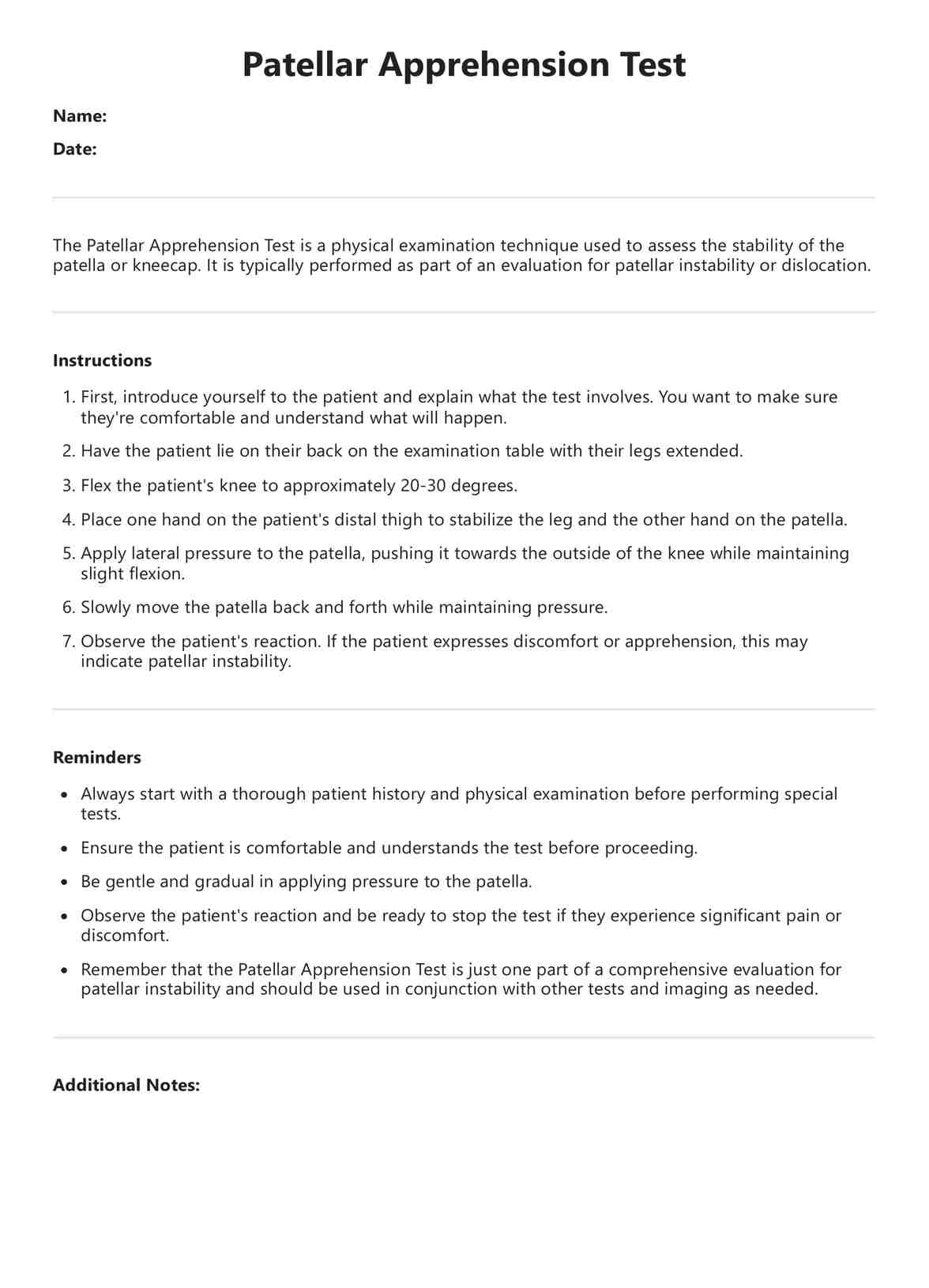A Patellar Apprehension Test makes assessing a patient’s knee integrity easy. All you need to do is ask the patient to sit up straight, with both feet flat on the floor. Then, place your hands on either side of the knee and rotate the kneecap inward and downward. If the patient experiences discomfort, resists, or displays abnormal movement of the patella, then this may indicate a knee injury.

Patellar Apprehension Test
Learn how to conduct a Patellar Apprehension Test and download our free PDF example. Get the steps, procedure, and assessment criteria of this knee exam.
Patellar Apprehension Test Template
Commonly asked questions
The Patellar Apprehension Test is a reliable method for diagnosing possible kneecap injuries. It can detect any instability or abnormal movement of the patella, which can be especially useful for diagnosing knee injuries such as patellofemoral pain syndrome.
The Patellar Apprehension Test measures the integrity of the kneecap and its associated structures. It can also detect any abnormal movement of the patella, which can indicate the presence of a knee injury.
EHR and practice management software
Get started for free
*No credit card required
Free
$0/usd
Unlimited clients
Telehealth
1GB of storage
Client portal text
Automated billing and online payments











